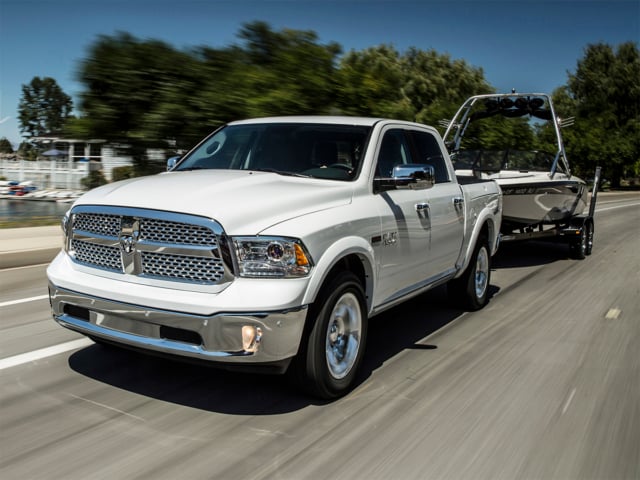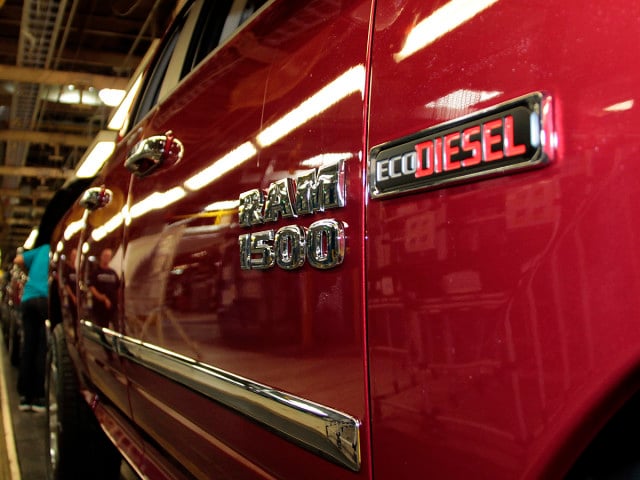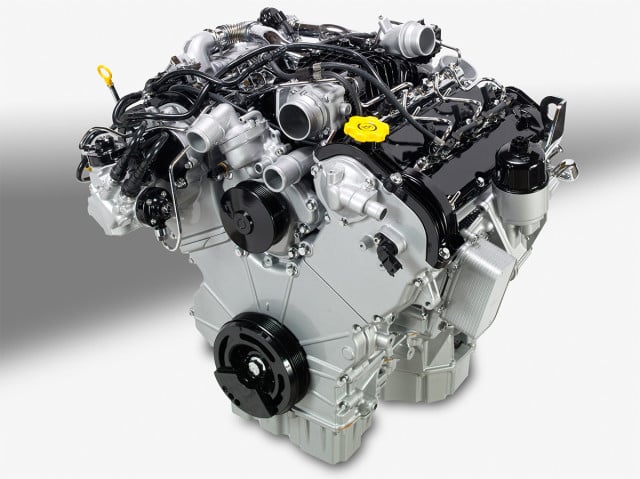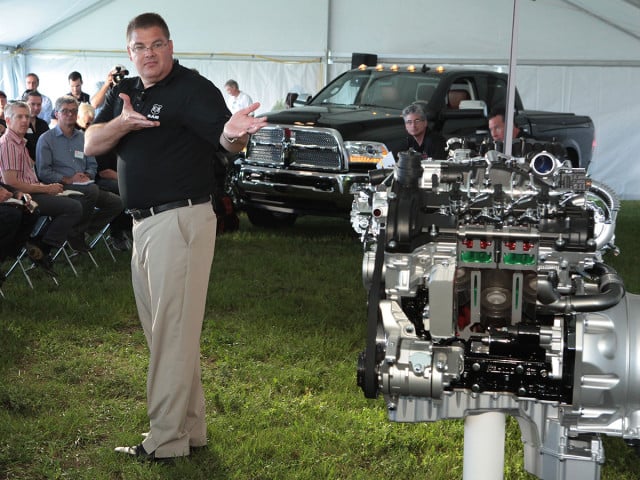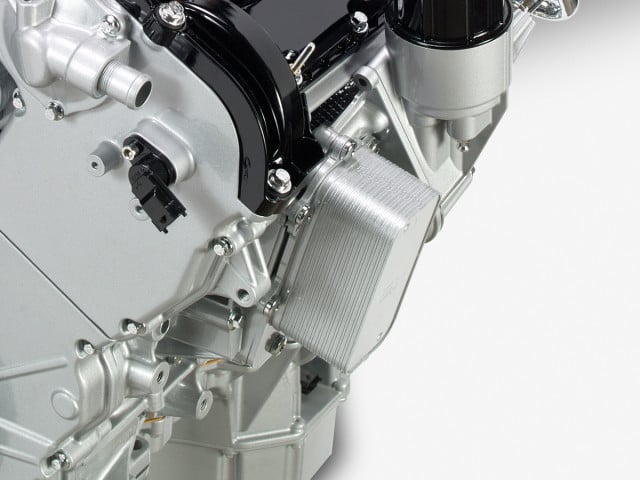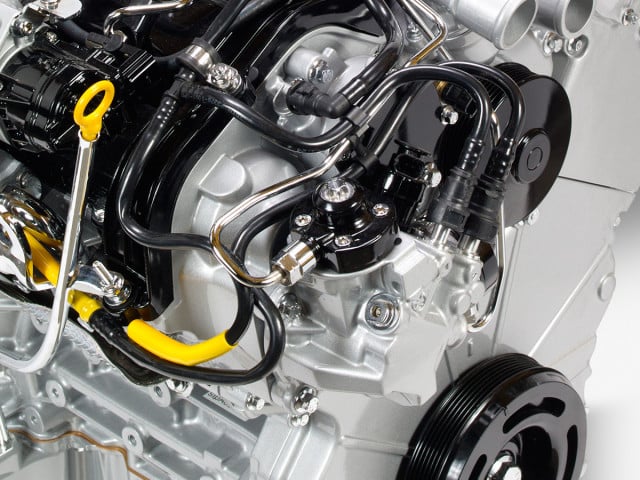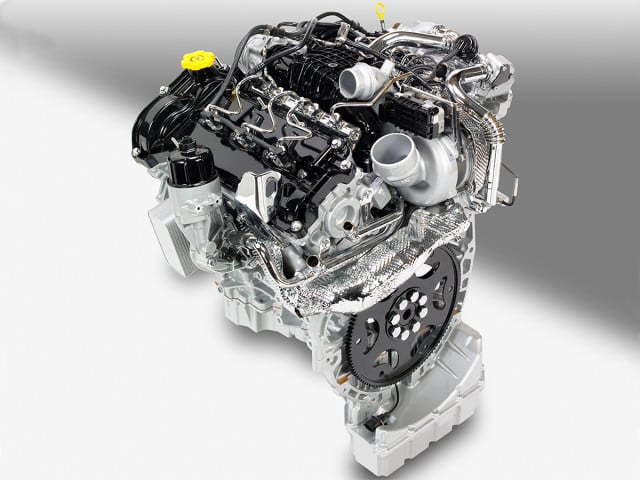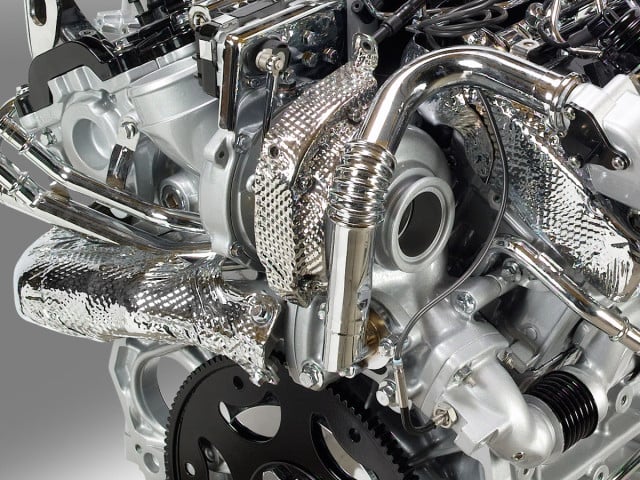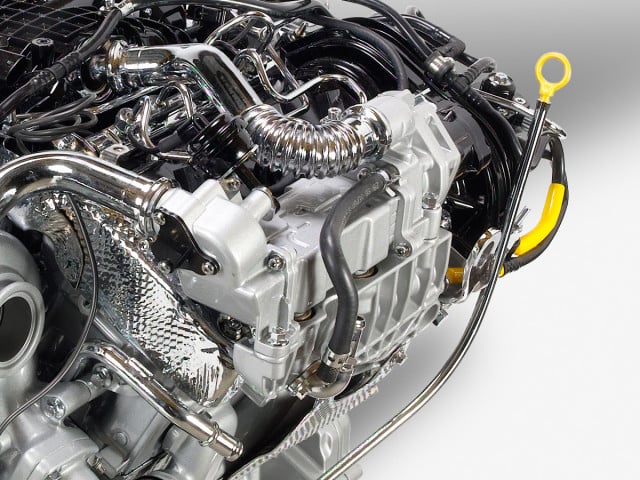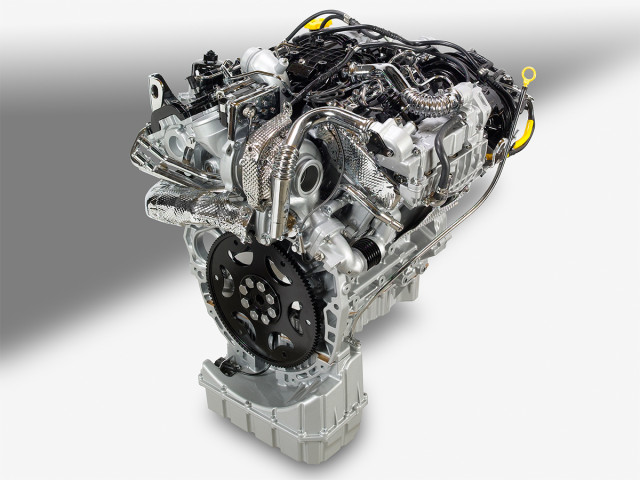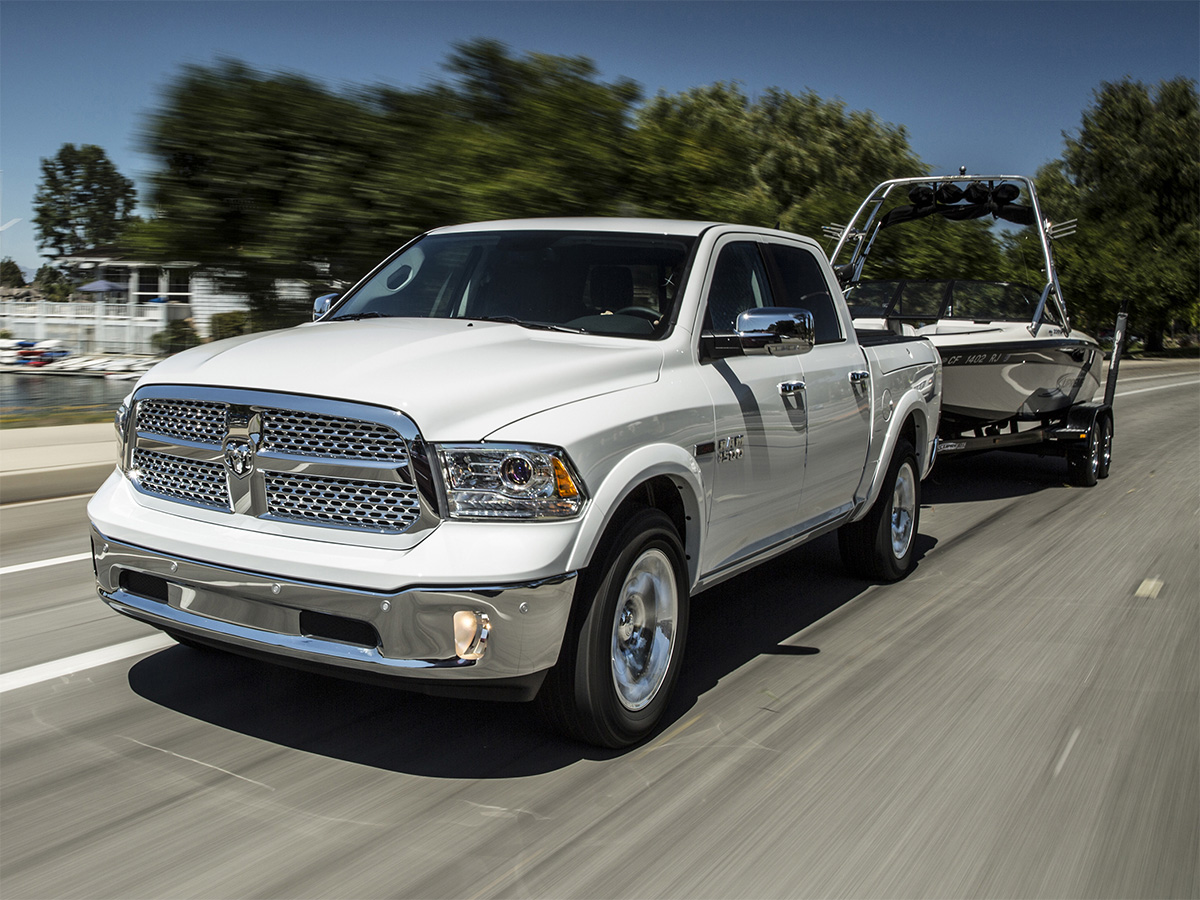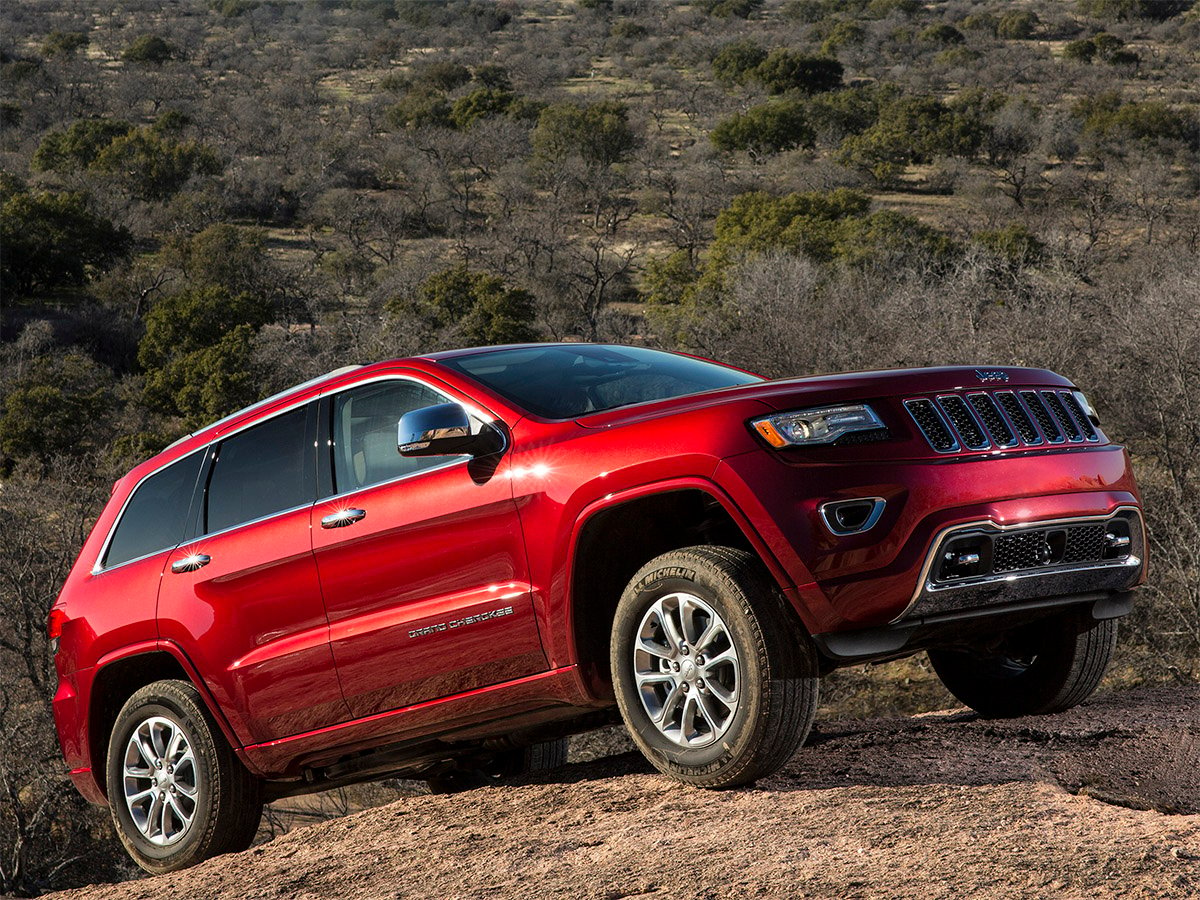Many times in business, one company’s misfortune provides an opportunity for another. This certainly is the case for FCA (Fiat Chrysler Automobiles) with the EcoDiesel. According to industry sources, GM was working with Italian diesel manufacturer VM Motori, to develop a diesel engine for the Cadillac CTS in Europe. When GM went into bankruptcy (2009), they had to abandon the project.
However, VM Motori wasn’t about to abandon the project. They reached out to a number of automotive brands and manufacturers trying to finish the development of the small displacement engine.
Chrysler and Ram Step In
“We know there is a lot of interest [for diesels]. For years we have had customers asking, why not a light duty diesel? There is a lot of interest. People know they will get great fuel economy, great durability, and reliability with a diesel. It has always been a difficult business case because diesels are expensive, and there is a lot to developing a diesel engine.
We were fortunate at this point in time that our partners at Fiat owned half of VM Motori, who makes this diesel engine. As well as working with our Jeep brethren on the diesel for the Grand Cherokee. We combined resources and developed them together. That cut the engineering cost down, and made us able to bring this to market. So, it really isn’t a big risk,” said Mike Cairns, Chief Engineer, Ram Truck Brands.
Inside The Engine
The foundation of the engine is the block. Just about every single component connects to the block and it really is a key component to the success of the engine. When designing the block, the engineers opted to use Compacted Graphite Iron (CGI). CGI blocks are becoming the norm with modern engines because it is stronger than a traditional iron block. Due to the increased strength, engineers can reduce the size of the block, thus reducing the weight. “Unlike diesels of the past that were really heavy, this [CGI] is very efficient, but gets the structural requirements you need for a diesel. So, it [the complete engine] actually weighs a little more than a Hemi engine but provides great diesel performance and fuel economy,” continued Cairns.
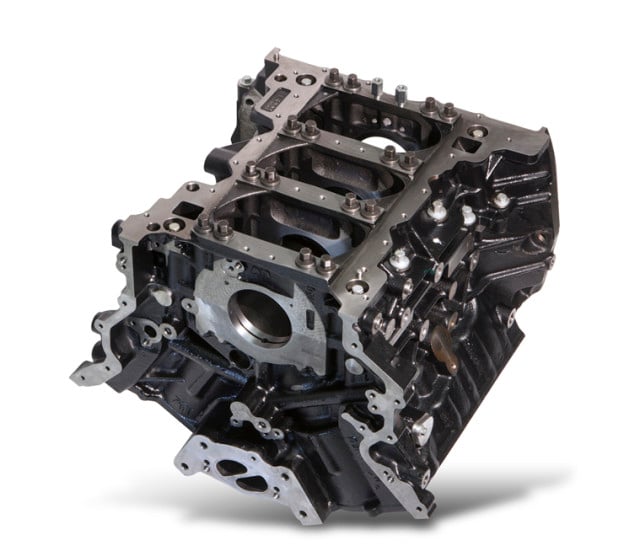
Photo courtesy of Banks Power.
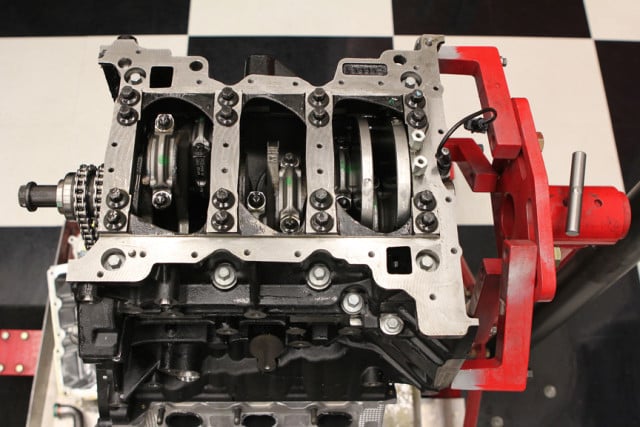
Banks Power uses the same VM Motori base engine in their Banks 630T..
To further strengthen the block, VM opted to use a bedplate. There are four bolts (14mm) per main, but then an additional eight bolts (12mm) holding the bedplate down. This is the equivalent of having six bolts per main.
3.0L EcoDiesel Specs
- Manufacturer: VM Motori
- Configuration: 60 degree V-6
- Head/Block Material: Aluminum cylinder head, Compacted Graphite Iron engine block
- Displacement: 3.0 liters, 182 cubic inches
- Compression Ratio: 15.5 : 1
- Bore: 3.27 inches
- Stroke: 3.60 inches
- Valvetrain: 24 valve, dual overhead cam
- Injection: 29,000 psi common rail
- Aspiration: Intercooled, water cooled variable geometry turbocharger (VGT)
- Oil Capacity: 10.5 quarts with filter
- Horsepower: 240hp @ 3,600 rpm
- Torque: 420 lb-ft @ 2,000 rpm
- Towing & Payload: 1,620 lbs max payload, 9,200 lbs max towing (2014 figures)
A forged 4140 steel crankshaft was designed to hold the cast iron connecting rods (not Powered Metal Rods) that are connected to cast aluminum pistons. With the pistons being cast, VM was able to integrate a steel top ring groove for increased durability.
Rotating Assembly
To keep the pistons cool during heavy duty cycles, each cylinder has an oil jet (squirter) at the bottom of each cylinder that sprays oil up into the piston to remove heat. The pistons, also, feature a full floating wrist pin.
Keeping the rotating assembly as light as possible, without sacrificing on strength, the top of the rods on the piston side have a keystone shape (they are cut in at an angle to reduce size). While that may seem like an overkill on a diesel engine, every ounce matters when it comes to acceleration as well as drag (i.e. fuel consumption).
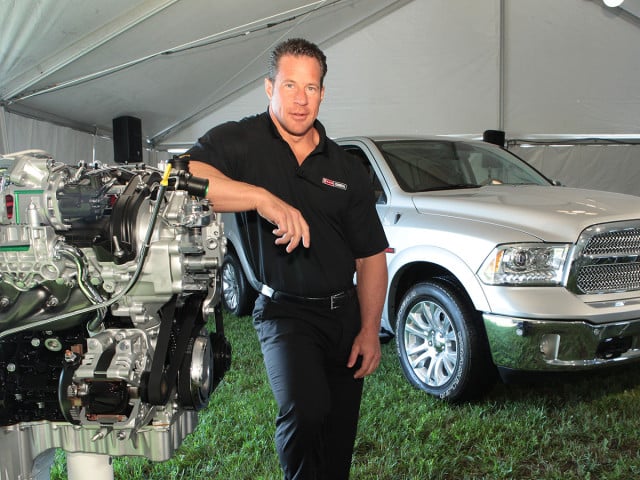
Reid Bigland, President and CEO Ram Truck Brand was, also, on hand to answer any questions during the media event.
Heads
For us in the truck market, the heads are quite unique. After decades of gasoline engines offering dual overhead camshafts the EcoDiesel is the first light duty diesel engine in the truck market to offer a dual overhead camshaft design.
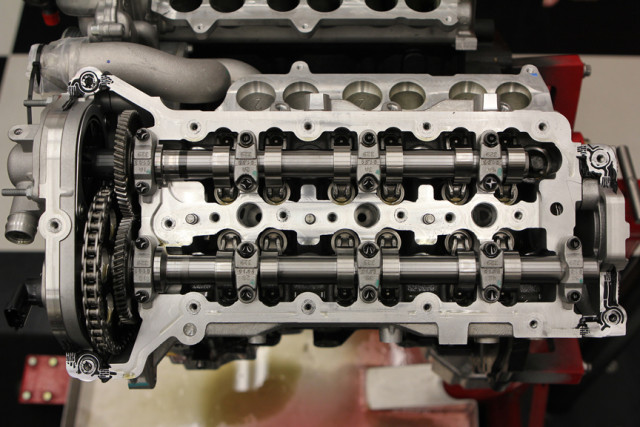 The DOHC heads are constructed from aluminum for significant weight savings. VM Motori has spent decades developing diesel engines. While their early aluminum heads had issues, those problems are a distant memory.
The DOHC heads are constructed from aluminum for significant weight savings. VM Motori has spent decades developing diesel engines. While their early aluminum heads had issues, those problems are a distant memory.
Each cylinder features two intake and exhaust valves. Each valve is operated by a roller-finger follower that is operated by a single lobe on the camshaft. Holding the camshaft down are individual bearing caps (four on the intake camshaft and five on the exhaust camshaft). According to RAM, the individual bearing caps help reduce friction and noise, vibration and harshness (NVH).
The exhaust camshaft is driven by a timing chain off of the crankshaft. The intake camshaft is then driven by the exhaust camshaft via a gear to gear mesh. Gear to gear mesh ensures the two camshafts will always be properly synced.
In addition to the valves, the heads, also, house the low voltage ceramic glow plugs as well as the fuel injectors. The ceramic glow plugs are able to operate at higher temperatures and get up to temperature faster than conventional metallic glow plugs. This not only helps to reduce emissions, but helps start the engine sooner with less wait time.
The high pressure fuel pump is driven off of the camshaft.
Fuel
The EcoDiesel uses Fiat’s proprietary fuel injection system known as MultiJet II. The MultiJet II technology is able to control the rate of injection much more precisely than traditional high pressure diesel fuel injectors. The fuel injectors use a servovalve instead of piezo. The servovalve injectors are actually able to accommodate up to eight fuel-injection events per cycle. This is three more than traditional piezo injectors that are found on most of the three quarter and one ton truck engines. The additional events mean that fuel can be delivered more precisely, yield more power, cleaner emissions and a quieter combustion event.
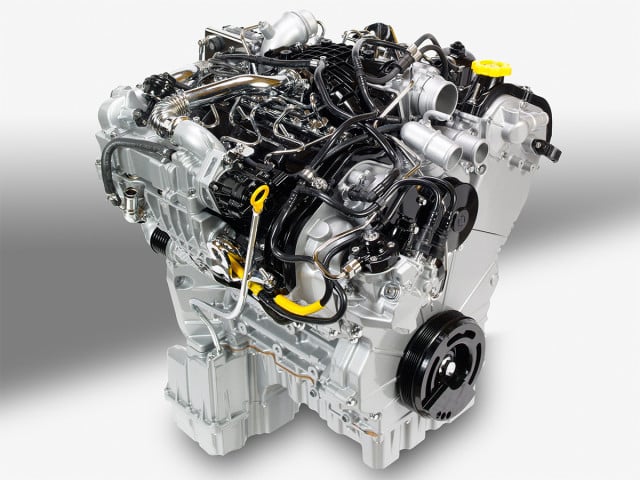 In addition to the high injection rate, the engine uses a Bosch high pressure fuel pump that is able to maintain 2,000 bar (roughly 29,000psi) in both fuel rails. The pump is driven off of the exhaust camshaft via a gear to gear mesh. The pump is mounted to the front cover on the passenger’s side (right side) and is a twin pump style much like the Duramax and 6.7 Power Stroke. The engine’s firing order is (1-4-2-5-3-6). The engineers optimized the firing order to manage the inertia and firing loads eliminating any need for a balance shaft, common to many V6 engines.
In addition to the high injection rate, the engine uses a Bosch high pressure fuel pump that is able to maintain 2,000 bar (roughly 29,000psi) in both fuel rails. The pump is driven off of the exhaust camshaft via a gear to gear mesh. The pump is mounted to the front cover on the passenger’s side (right side) and is a twin pump style much like the Duramax and 6.7 Power Stroke. The engine’s firing order is (1-4-2-5-3-6). The engineers optimized the firing order to manage the inertia and firing loads eliminating any need for a balance shaft, common to many V6 engines.
The engine has, also, been designed to handle up to 20 percent biodiesel (B-20). While this is becoming more common among newer engines, it still is an important feature. As more refineries start offering blends, it will eventually be common to see different blends being offered at most stations. Currently, biodiesel is most common in the in the Midwest but it is available in most states as well as in Canada.
Turbocharger
With any modern diesel, having a responsive turbocharger is crucial. The quicker the boost can come on, the sooner fuel can be added, and the more low end power can be made. This low end power is not only good for torque, but great for fuel economy. The EcoDiesel runs a small variable-geometry turbocharger.
For durability, the turbocharger features a water cooled center section. This prevents oil coking and extends the life of the charger. The turbocharger is mounted deep within the engine valley and in the back of the engine. The turbocharger is mounted so far back, that the down-pipe actually runs just behind the right cylinder head. The top of the turbine housing is roughly the same height as the EGR cooler and below the intake manifold.
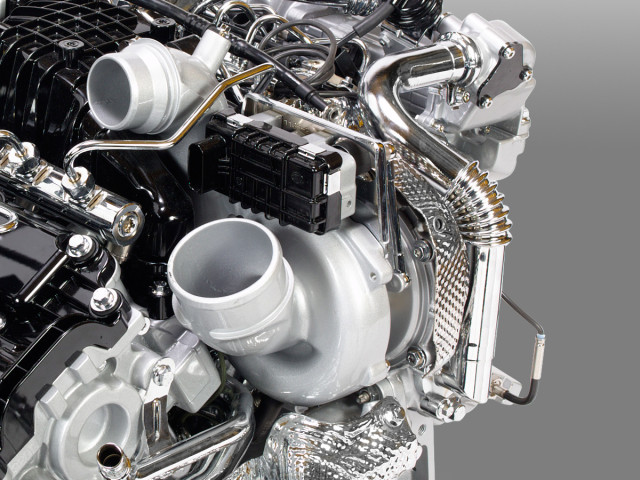 Exhaust flows out of the cylinder heads outboard of the engine and through a flex tube before being routed to the unique turbocharger. The volute passage isn’t clocked differently like the 6.7 Power Stroke, but the inlets are at different sides. The passenger-side inlet is directly below the down-pipe, while the driver-side inlet is next to the bearing housing. Both passages angle and route the exhaust around the scroll in a traditional pattern.
Exhaust flows out of the cylinder heads outboard of the engine and through a flex tube before being routed to the unique turbocharger. The volute passage isn’t clocked differently like the 6.7 Power Stroke, but the inlets are at different sides. The passenger-side inlet is directly below the down-pipe, while the driver-side inlet is next to the bearing housing. Both passages angle and route the exhaust around the scroll in a traditional pattern.
The compressor cover is just as unique. The inlet is just behind the left side high pressure fuel rail and it makes an immediate turn to feed the compressor wheel. The outlet of the compressor cover has been extended, and an elbow has been added to direct the outlet up and over the intake manifold. The packaging is certainly compact and tight.
Emissions
Emissions can be broken up into two types, tailpipe and NVH. Since the radical reduction in tailpipe emissions happened a few years ago, the EcoDiesel has the usual host of emission add on, DEF (Diesel Exhaust Fluid), EGR (Exhaust Gas Recirculation), SCR (Selective Catalytic Reduction), and DPF (Diesel Particulate Filter). The single EGR cooler is located on top of the passenger side valve cover and is cooled using engine coolant. The SCR and DPF are located behind the down-pipe inside the frame rail.
The DEF tank holds eight gallons and is sized for approximately 10,000 miles. According to Ram, the DEF system alerts the driver to low DEF levels while also allowing the engine to maintain full power.
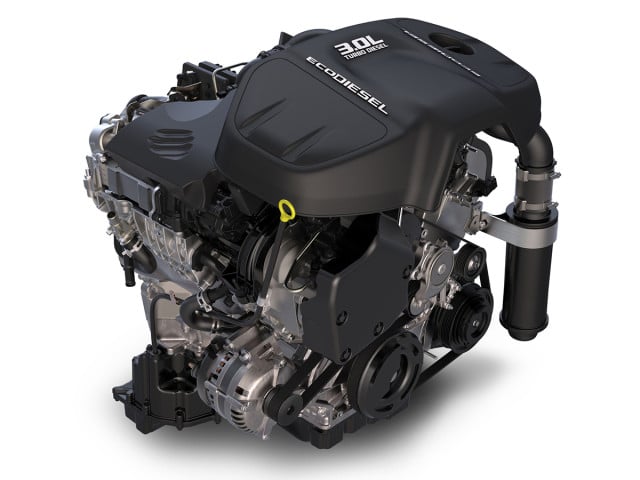 All of these systems work together, plus the variable geometry turbocharger, glow plugs, and MultiJet II injection system to create a package that is 50 state legal. Unlike situations in the past where manufactures have offered lower horsepower engines or the engine wasn’t available in certain states, the new EcoDiesel Ram and Jeep Grand Cherokee are offered in the same version coast to coast.
All of these systems work together, plus the variable geometry turbocharger, glow plugs, and MultiJet II injection system to create a package that is 50 state legal. Unlike situations in the past where manufactures have offered lower horsepower engines or the engine wasn’t available in certain states, the new EcoDiesel Ram and Jeep Grand Cherokee are offered in the same version coast to coast.
As far as NVH goes, since the original engine was designed for a Cadillac, every component has been designed to reduce NVH. Earlier it was mentioned how stiff and strong the block was. The fuel system also plays a huge role in the NVH emissions.
With the ability to fire eight times during a single combustion event, the system is able to gently load the piston and prevent it from contacting the cylinder wall aggressively (causing the loud clatter sound of older diesels.) One of the benefits of using chain drives for the camshafts is that there is no gear noise between the crank and camshaft. In addition to the engine components being designed to reduce NVH, there is, also, a cover that goes on top of the engine that helps to minimize the audible noise of the engine.
Wrap Up
After decades of consumers begging for a half ton diesel offering, Ram, is the first manufacturer to answer that call with the EcoDiesel. While many Ram fans aren’t thrilled that the engine isn’t a Cummins, the package that Ram put together with VM Motori is a solid one. “We love our relationship with Cummins. They just didn’t have something of this displacement that we were looking for. So, it kind of fell in our laps with the partnership with Fiat, this engine was being developed already and we jumped on it,” said Cairns.
With a tow rating of 9,200 pounds and 28 miles per gallon (approximate range is 730 miles per tank) it is hard to argue that the direction they went (smaller displacement) was a bad one. Sure, if you get in the truck, it isn’t a high power diesel like a three quarter or one ton truck, but a half ton truck isn’t designed for the same environment. Who knows what will happen in the coming years with the tuning market. Banks Power has said they believe that 600 horsepower isn’t out of the question for this package. The EcoDiesel may cause a whole new war in the half ton truck market, and will certainly unleash years worth of high performing half ton diesel trucks for the aftermarket to play with.
Currently the Ram 1500 and Jeep Grand Cherokee are available with the EcoDiesel. There is a rumor that the Jeep Wrangler will have the EcoDiesel available in 2016.



